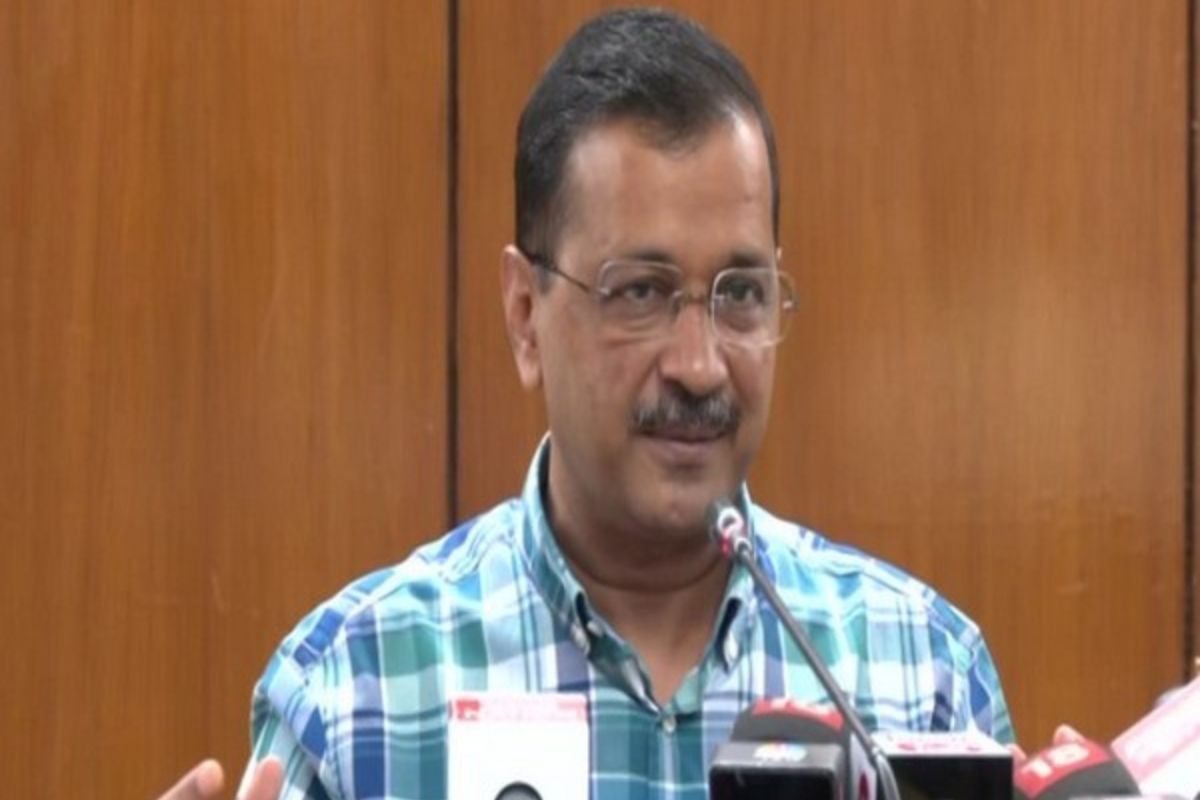As Delhi Budget for fiscal 2023-24 was presented on Wednesday, Chief Minister Arvind Kejriwal said the national capital is estimated to grow at 9 per cent, more than the country’s estimated growth rate of 7 per cent.
Addressing a press conference after the presentation of the Budget on Wednesday, the Delhi CM said, “This year’s budget focuses on clean, beautiful, and modern Delhi. The budget has given a huge infrastructure push, with a total outlay of about Rs 21,000 crores towards this sector. Delhi’s GSDP in fiscal 2022-23 is likely to be 9.18 per cent, significantly higher than the estimated national growth rate of 7.0 per cent.” Earlier, a Budget for the financial year 2023-24, worth Rs 78,800 crores, was presented by Delhi
Finance Minister Kailash Gahlot. The total budgetary outlay is two and a half times the expenditure of Rs 30,940 crore in 2014-15, and 8.69 per cent higher than the revised estimates for 2022-23. CM Arvind Kejriwal also assured that the three landfills in Okhla, Bhalaswa, and Ghazipur will be cleared by 2024.
“Delhi Government to join hands with MCD and provide financial assistance to get rid of Delhi’s three garbage mountains of shame in next two years – Okhla landfill by December 2023, Bhalaswa landfill by March 2024, and Ghazipur landfill by December 2024,” the Budget Document said.
Of the budgeted estimate of Rs 78,800 crore for 2023-24, Rs 56,983 crore is for the purpose of revenue expenditure and an outlay of Rs 21,817 crore under capital expenditure.
Notably, the share of capital expenditure as part of the overall budget has been raised by 27.68 percent in this year’s budget. The proposed capital expenditure of Rs 21,817 crore is almost three times the capital outlay of Rs 7,430 crore in 2014-15.
Through this budget, the Arvind Kejriwal-led administration aims to launch what it said is one of the most ambitious and comprehensive plans in Delhi’s history to transform it into a ‘clean, beautiful and modern city’.
Nine major schemes are proposed under the ambitious theme.
Delhi seeks to upgradation and beautify 1,400 km of the entire PWD road network with a 10-year estimated expenditure of nearly Rs 20,000 crore – the biggest such effort in Delhi’s history.
The Budget document said a total of 28 flyovers were completed in the last eight years, and construction of another 26 new flyovers is underway. These include projects like Barapullah Phase 3 flyover from Sarai Kale Khan to Mayur Vihar and the elevated road at Najafgarh Phirni.
It will construct three double-decker flyovers in collaboration with DMRC at Bhajanpura to Yamuna Vihar, Azadpur to Rani Jhansi intersections, and from Saket to Pul Prahaladpur. Vehicles will run on the lower deck of these double-decker flyovers, while the Metro rail will run on the upper deck.
The Budget proposes to introduce 1,600 new zero-emission electric buses next year, as part of a massive plan to induct a total of 8,280 electric buses (80 percent of the total fleet) by 2025 with a financial outlay of Rs 28,500 crore in 12 years.
First, a dedicated last-mile connectivity scheme called the ‘mohalla bus’ scheme will be launched in Delhi next year with 100 smaller (nine-meter length) electric buses, scaling up to 2,180 ‘mohalla buses’ by 2025.
Also, the electrification of all 57 existing bus depots in Delhi will be done so that they are ready for the induction of electric buses. The estimated cost would be about Rs 1,500 crore.
For the modernization of transport infrastructure, three modern Inter-State Bus Terminals (ISBTs) with airport-like amenities at Sarai Kale Khan, Anand Vihar, and Dwarka will be set up. These will be called “Bus Ports”.
In addition, two multi-level bus depots with parking up to six levels, two modern bus terminals, and nine new bus depots will also be constructed.
Further, 1,400 new and modern bus queue shelters in Delhi with digital screens with modern Passenger Information System (PIS) that will display the arrival time of buses will be erected.
Six-point action plan for a Clean Yamuna
The Delhi government said in the Budget it will rapidly expand the reach of the sewer network to all the colonies and clusters.
The total number of unauthorised colonies connected to the sewer network will almost double from 747 to 1,317 colonies next year. The people of Delhi will continue to receive the benefit of free household sewer connections.
Education and Health
Education and health are set to continue to get the highest allocation for 2023-24. Allocation to education is pegged at Rs 16,575 crore (21 percent) and health is Rs 9,742 crore (12 percent).
The Budget proposes to provide new tablets to all teachers (including regular, guest, and contractual), vice principals, principals, and DDEs of Delhi government schools.
Major proposals under Health department
Free test facilities at Mohalla Clinics are to be increased from 250 to 450.
“New Aam Aadmi Mohalla Clinics to come up at Metro stations. A number of Mahila Mohalla Clinics to expand from 4 to 100 in the coming year,” it said.
Regarding GDP size, the survey said the Advance Estimate of GSDP of Delhi at current prices during 2022-23 is likely to attain a level of Rs 1,043,759 crore which is at a growth of 15.38 percent over 2021-22.
With the economy returning to normalcy brought closer by the successful mega vaccination drive in Delhi, hopes of a robust recovery in the services sector, consumption, and investment have been rekindled.
Coming to the Outcome Budget 2022-23, it covered 23 major departments under which, major programs and schemes were identified and key output and progress indicators were defined against each of them.
“Our government is the first to start the outcome budget. We keep our report card in front of the public and we track each flagship scheme through two indicators, the Output Indicator and the Outcome Indicator,” Delhi NCT finance minister Kailash Gahlot had said.











